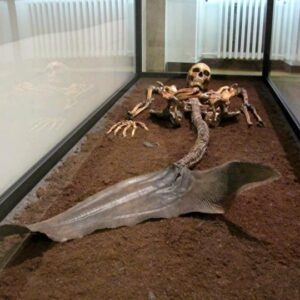
Everything about the fate of Flight 1549 seemed like a million-to-1 shot — a flock of birds crossing a jetliner’s path and taking out both engines, a safe landing in the Hudson River by a former fighter pilot.
As amazement about the “miracle on the Hudson” turned to questions, a team of 20 National Transportation Safety Board investigators began looking into how Thursday’s bizarre near-disaster happened.
The pilot guided the hobbled US Airways jetliner over New York City and into the frigid river, with an impact one passenger described as little worse than a rear-end collision. All 155 on board were pulled to safety as the plane slowly sank.
US Airways chief executive Doug Parker said in a statement it was “premature to speculate about the cause.” Federal Aviation Administration spokeswoman Laura Brown said there was no immediate indication the incident was “anything other than an accident.”
It was a chain of improbability. Birds tangle with airplanes regularly but rarely bring down commercial aircraft. Jet engines sometimes fail — but both at once? Pilots train for a range of emergencies, but few, if any, have ever successfully ditched a jet in one of the nation’s busiest waterways without any life-threatening injuries.
“We had a miracle on 34th Street. I believe now we have had a miracle on the Hudson,” Gov. David Paterson said.
If the accident was hard to imagine, so was the result: Besides one victim with two broken legs, there were no other reports of serious injuries to the 155 people aboard.
“You’re happy to be alive, really,” 23-year-old passenger Bill Zuhoski said.
US Airways Airbus A320, bound for Charlotte, N.C., took off from LaGuardia Airport at 3:26 p.m. Less than a minute later, the pilot reported a “double bird strike” and said he needed to return to LaGuardia, said Doug Church, a spokesman for the National Air Traffic Controllers Association.
Church said the controller told the pilot to divert to an airport in nearby Teterboro, N.J. It was not clear why the pilot, identified as Chesley B. “Sully” Sullenberger III of Danville, Calif., did not land there and headed for the Hudson instead.
Passengers quickly realized something was terrifyingly wrong.
“I heard an explosion, and I saw flames coming from the left wing, and I thought, ‘This isn’t good,'” said Dave Sanderson, 47, who was heading home to Charlotte from a business trip. “Then it was just controlled chaos. People started running up the aisle. People were getting shoved out of the way.”
Then came an ominous warning from the captain: “Brace for impact because we’re going down,” according to passenger Jeff Kolodjay, 31.
Some passengers prayed. Vallie Collins, 37, tapped out a text message to her husband, Steve: “My plane is crashing.” For a desperate half-hour, he was unable to get in touch with her to learn that she had survived.
Onshore, from streets and office windows, witnesses watched the plane steadily descend off roughly 48th Street in midtown Manhattan.
“I just thought, ‘Why is it so low?’ And, splash, it hit the water,” said Barbara Sambriski, a researcher at The Associated Press, who watched the water landing from the news organization’s high-rise office.
The 150 passengers and five crew members were forced to escape as the plane quickly became submerged up to its windows in 36-degree water. Dozens stood on the aircraft’s wings on a 20-degree day, one of the coldest of the winter, as commuter ferries and Coast Guard vessels converged to rescue them.
One ferry, the Thomas Jefferson of the company NY Waterway, arrived within minutes. Riders grabbed life vests and rope and tossed them to plane passengers in the water.
“They were cheering when we pulled up,” Capt. Vincent Lombardi. “People were panicking. They said, ‘Hurry up! Hurry up!'”
Two police scuba divers said they pulled a woman from a lifeboat “frightened out of her mind” and lethargic from hypothermia. Helen Rodriguez, a paramedic who was among the first to arrive at the scene, said she saw one woman with two broken legs.
Paramedics treated at least 78 patients, many for hypothermia, bruises and other minor injuries, fire officials said. Some of the shivering survivors were swaddled in blankets, their feet and legs soaked.
Hours later, some passengers had already boarded new flights and were heading to their original destinations.
Carl Bazarian, of Amelia Island, Fla., said he wasn’t scared to get back onto a plane so soon after the river landing because he went back to LaGuardia airport with a group of passengers he met during the rescue.
“We weren’t scared, because we were with each other, holding hands and hugging,” he said, talking by cell phone early Friday morning from Charlotte, N.C., where he had a layover on his way to Florida. “I know them now, so well. The chemistry was incredible.”
The downed jetliner initially remained afloat but sank slowly as it drifted downriver. Gradually, only about half of the tail fin and rudder were above water. Mayor Michael Bloomberg said the aircraft finally wound up near Battery Park, at the lower tip of Manhattan and about four miles from where the pilot ditched it.
An official speaking on condition of anonymity because the investigation was still ongoing identified the pilot as Sullenberger. A woman answered and hung up when the AP asked to speak with Sullenberger’s family in Danville.
Sullenberger, 57, a former Air Force fighter pilot, has flown for US Airways for 29 years. He also runs a safety consulting firm.
From 1990 to 2007, there were nearly 80,000 reported incidents of birds striking nonmilitary aircraft, about one strike for every 10,000 flights, according to the Federal Aviation Administration and the Department of Agriculture.
The Hudson accident took place almost exactly 27 years after an Air Florida plane bound for Tampa crashed into the Potomac River just after takeoff from Washington National Airport, killing 78 people. Five people on that flight survived.
On Dec. 20, a Continental Airlines plane veered off a runway and slid into a snowy field at Denver International Airport, injuring 38 people. That was the first major crash of a commercial airliner in the United States since Aug. 27, 2006, when 49 people were killed after a Comair jetliner took off from a Lexington, Ky., runway that was too short.
___
Associated Press writers Joan Lowy, Michael J. Sniffen and Eileen Sullivan in Washington; David B. Caruso, Sara Kugler, Marcus Franklin, Samantha Gross, Deborah Hastings, Colleen Long and Richard Pyle in New York; Victor Epstein in Weekhawken, N.J.; and Harry R. Weber in Atlanta contributed to this report.























